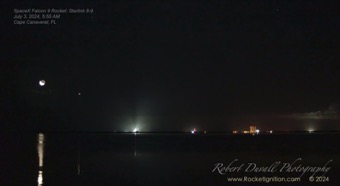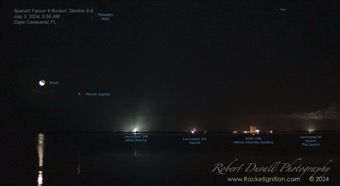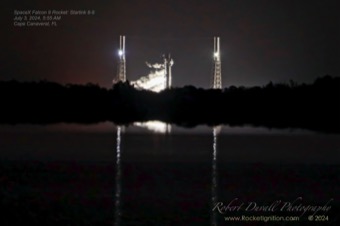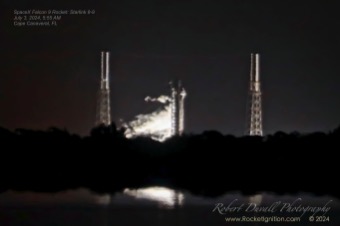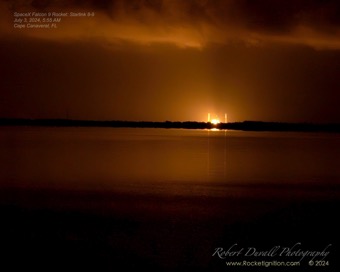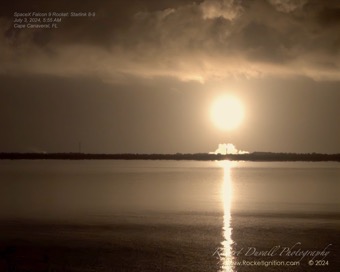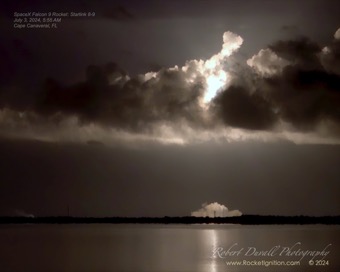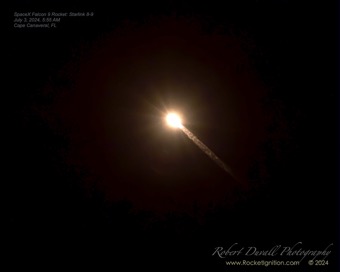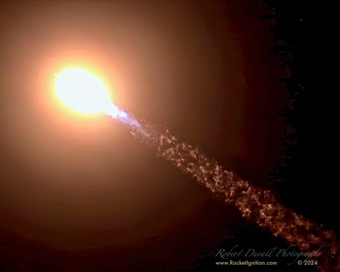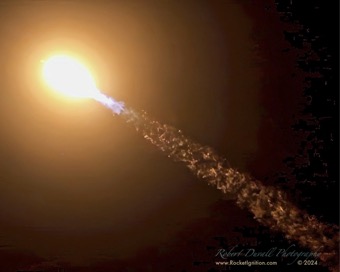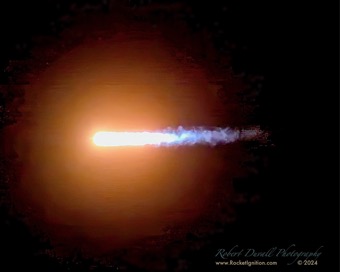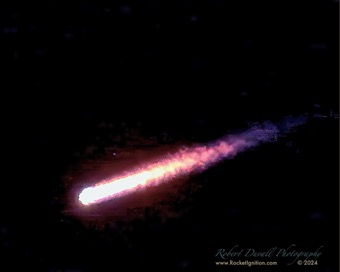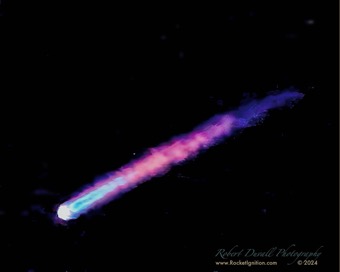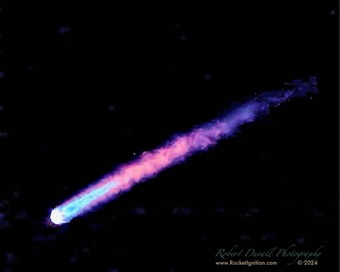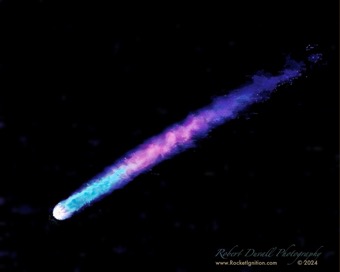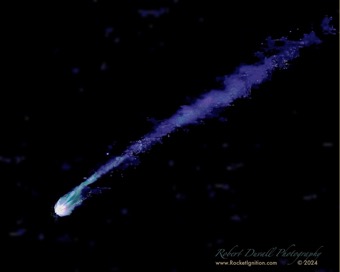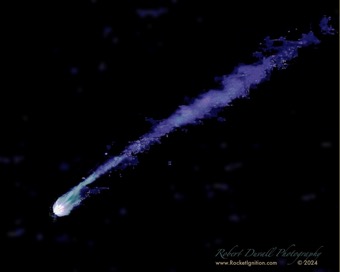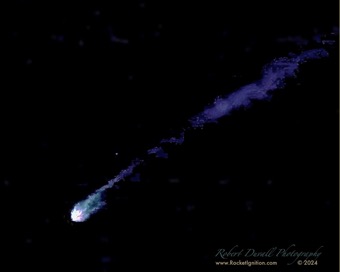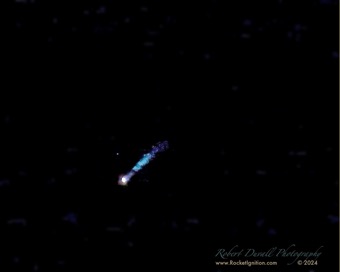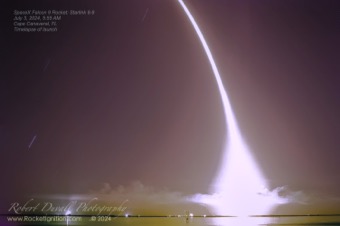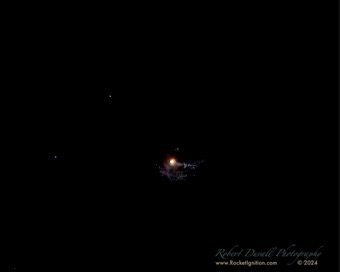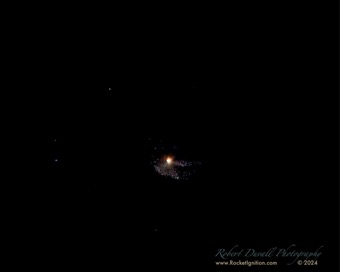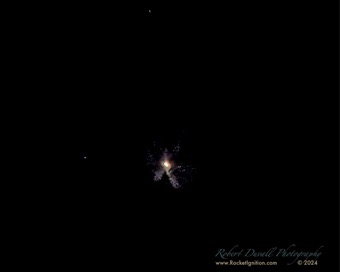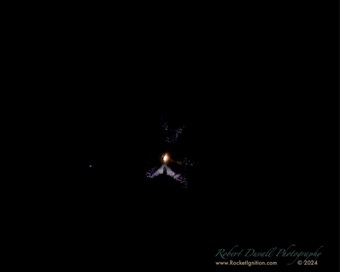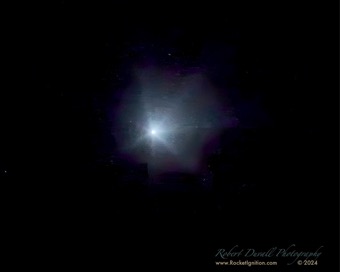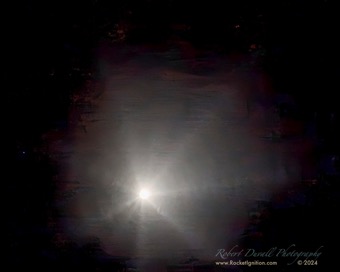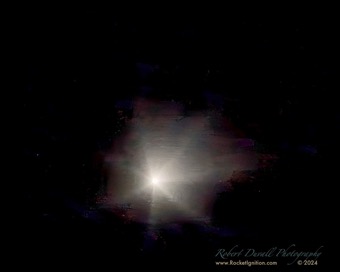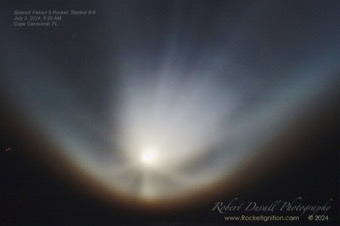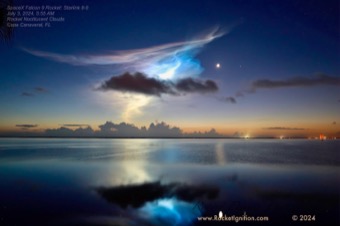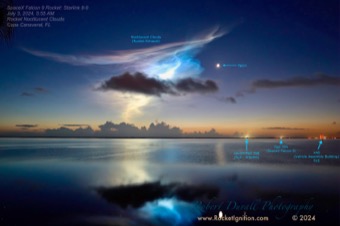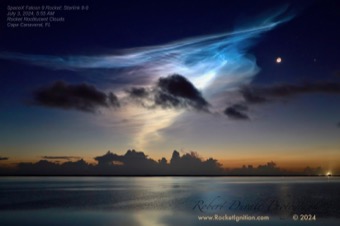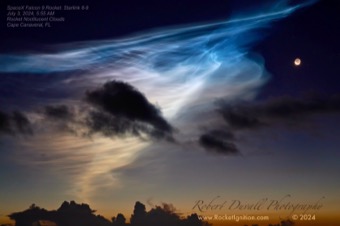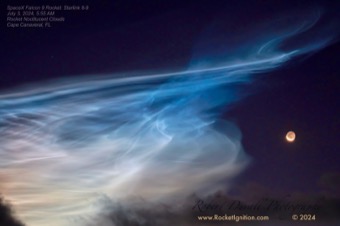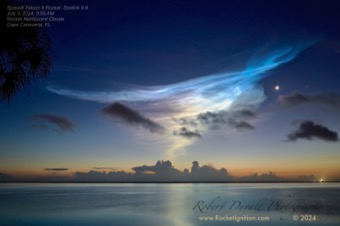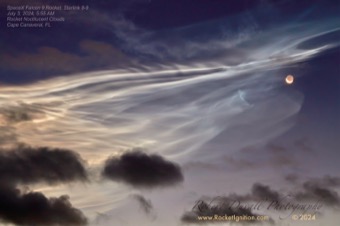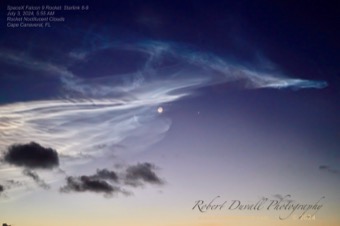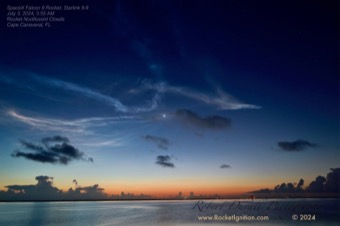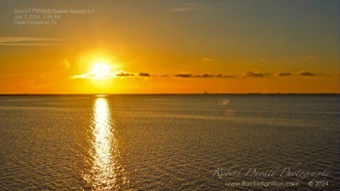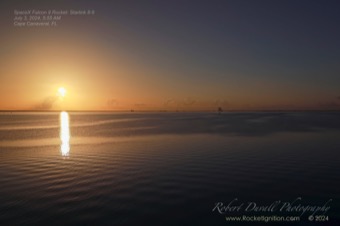|
About Us |
Home |
Email |
July 3, 2024 5:55 AM
Launch Complex 40, at the Kennedy Space Center Florida
Rocket-Fueled Noctilucent Clouds photos (below my launch photos)
PHOTOS
Click once to enlarge, TWICE for full-size (all website images are half or less of the originals)
Email to inquire about ordering prints or full-size digial copies
Auto Slide Show! OR Manual Slide Show!
Below:
Rocket-Fueled Noctilucent Clouds
with reflections on the Lagoon,
Plus the Moon with Earthshine, Jupiter, and the Pleiades and Aldebaran
After the rocket went up, over the next 45 minutes, these clouds formed from the rocket's exhaust in the upper atmosphere.
As the rocket streaks through the mesosphere, water-rich vapors emerging from the engine form a frosty rime around specks of meteor debris.
These meteor-seeded ice crystals together make a noctilucent cloud.
NLCs naturally form from water vapor rising from the surface of Earth in summer, which gradually moves up to the edge of space.
Rockets, by exhaust spraying water vapor into the mesosphere, greatly accelerate this process. The Cape Canaveral display on July 3rd is a great example!
VIDEO
Pre-Launch Camera 3 |
High Power Tracking Camera 1 |
Camera 2 Lower Power Overview Camera 2 |
Stage 2 High Power Camera 1 |
Mission: 20 Starlink satellites Group 8-9 (7 Starlink v2 Mini and 13 Starlink Direct To Cell satellites)
Booster: B1073
Booster history: 15 missions: Hispasat Amazonas Nexus, SES-22, Hakuto-R M1, CRS-27, Bandwagon-1 plus 10 Starlink.
Booster recovery: Drone Ship 'A Shortfall of Gravitas' (ASOG)
Fairing recovery: Bob
Stats:
SpaceX's 70th launch of the year and the 1st launch of the month.
SpaceX's 195th launch from SLC-40.
351st orbital flight, 178th launch dedicated to Starlink.
253rd successful landing, 76th landing on ASOG (out of 76 attempts).
Copyright © 2021-2024 Rocket Ignition All rights reserved. Unauthorized use prohibited.
